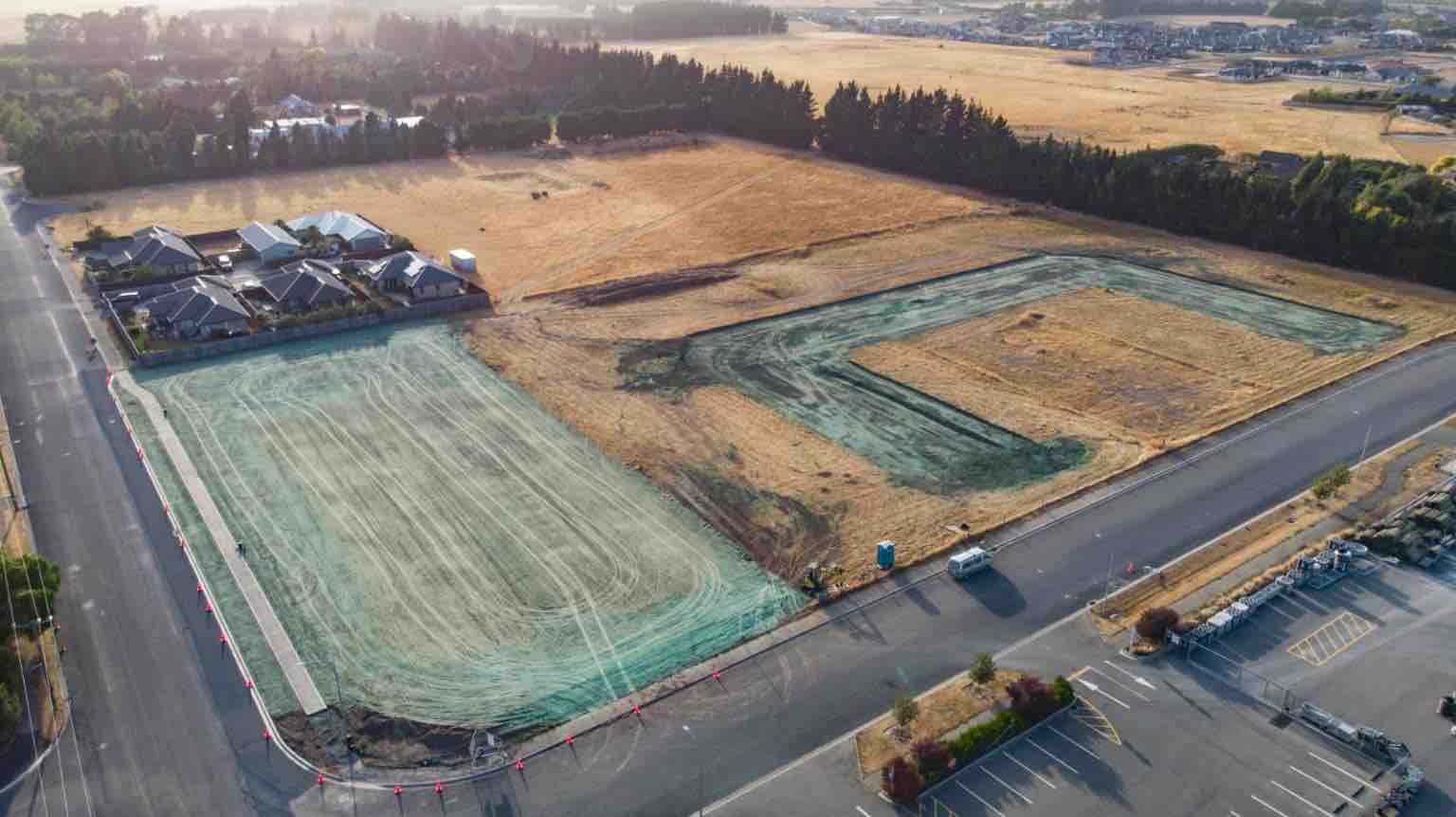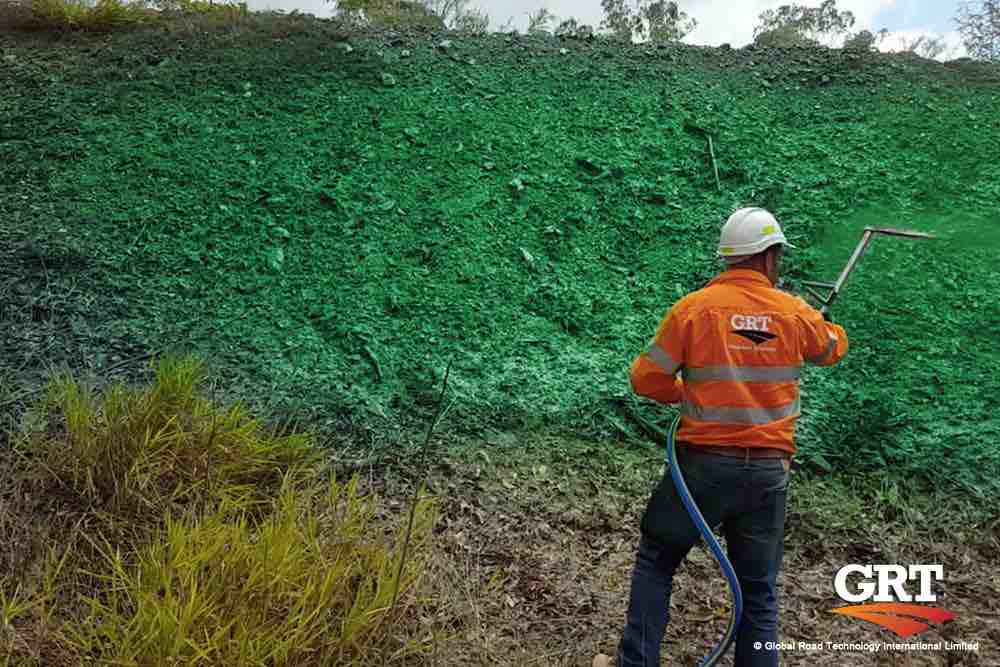Erosion and deposition of soil is a natural phenomenon – that has literally shaped planet earth – however erosion control practices and products have needed development as humans now more than ever are accelerating this process with devastating affects. Land clearing for farming, housing, mining, and civil infrastructure are major contributors to the processes that increase the susceptibility of surfaces to erosion and sedimentation, which also has been escalated by climate change. The need for erosion control over the years has led to a variety of different erosion control products that are manufactured using numerous techniques and are made out of different materials which has contributed to the multi-purpose approach normally taken in erosion control. Priority is to control sediment transport through binding and stabilizing from erosive agents that generate erodible sediment which can negatively impact local water bodies, the environment and act as source of fugitive dust. The discussion will focus on common erosion control products, their applications and finally complementary Global Road Technology solutions that focus on direct soil contact and preventing erosion in the first place.
Rolling out erosion control solutions
Rolled erosion control products can either be temporary and biodegradable or long-term non-degradable materials that are manufactured into rolls designed to reduce soil erosion, and assist in the establishment, protection, and growth of vegetation. In some applications the biotic earth media consisting of seed, fertilizer and tackifier are placed in the first layer only after which the second layer consisting of the erosion control product either short term or long term is added with options of hydromulch as well to ensure fast vegetative growth. Given the variety of products for sedimentation and erosion control, standards have been proposed by the ASTM, which cover sediment retention fiber rolls and rolled erosion control products.
The first example of rolled erosion control products are mulch control netting or erosion control net which is made out of a planar woven natural fiber or extruded geosynthetic mesh used as a temporary degradable rolled erosion control product to anchor loose fiber mulches. Secondly, open weave textiles are temporary degradable rolled erosion product consisting of processed natural or polymer yarns woven into a matrix, used to provide erosion control and facilitate vegetation establishment. Thirdly, an erosion control blanket offers a mechanically stabilized form of immediate cover made out of processed natural or polymer fibers structurally bound together to form a continuous matrix, which functions as a barrier against both the detachment and transportation phase of the erosion process till vegetative or reinforced vegetative cover takes up its role in binding the soil to deter erosion. Erosion control blankets can also be described as a canvas of vegetable fibers mainly straw, coconut fiber or a mixture of them which is reinforced with polypropylene or jute thread. For example coconut fibers are mechanical robust whereas straw is commercially grown for the purposes of erosion control blankets. Waste generated from agricultural activities such as rice straw and sugarcane which tends to be disposed of or incinerated can be used to produce erosion control blankets that enhance the nutritious value of the soil whilst providing erosion control. Traditionally, coconut fibers have been widely used but incentive for the use of rice and sugarcane is that unlike the former, which takes about 3 years to decompose, the latter takes 1 to 1.5years which can be more appropriate in certain environments.

Reinforced turf as erosion control
Fourthly, a reinforced turf mat is used for establishing vegetation and erosion protection through entanglement filaments, which provide a strong foothold for the roots of natural vegetation as an alternative to hard armouring such as concrete or riprap. The non-organic materials used for turf reinforcement mats are typically made of plastics and are designed to withstand degradation from both biological and UV exposure for extended periods of up to 75 years. There are multi-layer materials made of natural fibers with strong merit of reducing evaporation from the surface of any soil. Included in the turf reinforced mat is a strong geogrid which is applicable in harsh, tough and hydraulic conditions such as shorelines, channels, high flow ditches, stream banks and steep slopes for purposes of preventing scour, soil loss through erosion and sediment runoff and in areas where limited vegetation establishment is anticipated. Contrary to an erosion control blanket which offers a solution to the site cases where natural vegetation needs a helping hand, turf reinforced mats should be used to protect the vegetation from shear forces that would strip out natural vegetation. The root structure is protected by the turf reinforcement mat even on damage to the grass blade which allows for vegetation to reestablish itself quickly. The complexities of using turf reinforcement mats which also affects their applicability are driven by the turf reinforcement mat/soil/water interactions. However for both materials, the subgrade must be adequately prepared, and the area must be seeded correctly installation of the erosion control blanket or the turf reinforcement mat.
Are environmental regulations, health and safety concerns or potential profit loss a concern right now?
Compost and mulch solutions
Lastly, erosion control can be achieved through the use of mulch or compost blankets that are not in a mechanically engineered form and neither do they roll but rather are spread on the surface to create a uniform compost or mulching layer that provides effective protection of seeds and soil from erosion when exposed to the environment. In other applications, compost prepared from aquatic weed has been used with some efforts to also use wood fibre mulch, aged poultry litter, municipal waste compost, biosolids compost, food waste compost, yard waste compost has been tested for reduction in total solids loss in runoff. Results have shown that on use of compost, mulch and 50-50 mixture of compost and mulch appreciable reduction in runoff and rate of soil erosion is achieved with best results obtained for the 50-50 mixtures, which deteriorates in effectiveness with increase in slope. The use of specialized compost blends is also improving the performance of farming yields in fruit and nut farms.
Industry best practice

Collaboration of technologies is always key in achieving total erosion and sediment control especially with challenges associated with the need for layering before application of rolled erosion control products. GRT has developed several products that are hydraulically applied and achieve 100% direct soil contact – so the treatment cannot be undermined like many rolled blanket style approaches. A key product is GRT Enviro-Binder. This binds the soil and forms a complex, three-dimensional interconnected structure with the previously, loose granular particles. Upon complete evaporation of water and once the polymer dries, a durable, weatherproof surface is formed which agglomerates granular particles and eventually the entire surface in the process preventing erosion. Another polymeric solution, which can deliver excellent wind erosion control for exposed surfaces at very cost effective rates, is GRT: Soil-Loc. It provides a durable crust that can handle very high winds and also raindrop impact for both rural and agricultural and also land development and mining. Biotic growth amendment can be improved remarkably using liquid polymer combined with effective source of phosphorus and nitrogen to boost germination and strike rate using GRT Nature Plus. Hence regardless of the rolled erosion control product being used the multipurpose nature of GRT products offers complementary solutions which enable application in different scenarios for various purposes but all which is related to achieving erosion and sediment control.
Your feedback is important to us. If you enjoyed reading this Global Road Technology industry update and found it informative, please let us know by leaving a REVIEW.
REFERENCES
Burns, S.E. 2011. Categorization of Erosion Control Matting. GDOT PROJ NO. 07-25 Final Report.
Burns, S.E., Choo, Hyunwook, C., and Won, J.M. 2013. Categorization of Erosion Control Matting for Slope Applications. Georgia DOT Research Project 11-22 Final Report.
Julien, P.Y. 2010. Erosion and Sedimentation. 2nd edition. Cambridge University Press. Cambridge.
Norris, J.E., Stokes, A., Mickovski, S.B., Cammeraat, E., van Beek, R., Nicoll, B.C., and Achim, A. 2008. Slope Stability and Erosion Control: Ecotechnological Solutions. Springer Science + Business Media B.V.
Pitt, R., Clark, S.E., and Lake, D. 2007. Construction Site Erosion Control and Sediment Controls: Planning, Design and Performance.
Wiesmayer, P. 2020. By-products from rice and sugarcane production become erosion control mats. SUSTAINABILITY. Article in press.
Troy Adams
Troy Adams is the Managing Director of Global Road Technology (GRT) Specialising in Engineered Solutions for Dust Suppression, Erosion Control, Soil Stabilisation and Water Management. A pioneering, socially conscious Australian entrepreneur, Troy Adams is passionate about health and safety and providing innovative solutions that are cost-effective to the mining industry, governments and infrastructure sectors. Troy is also a tech investor, director of companies like Crossware, Boost, Hakkasan, Novikov and more.

